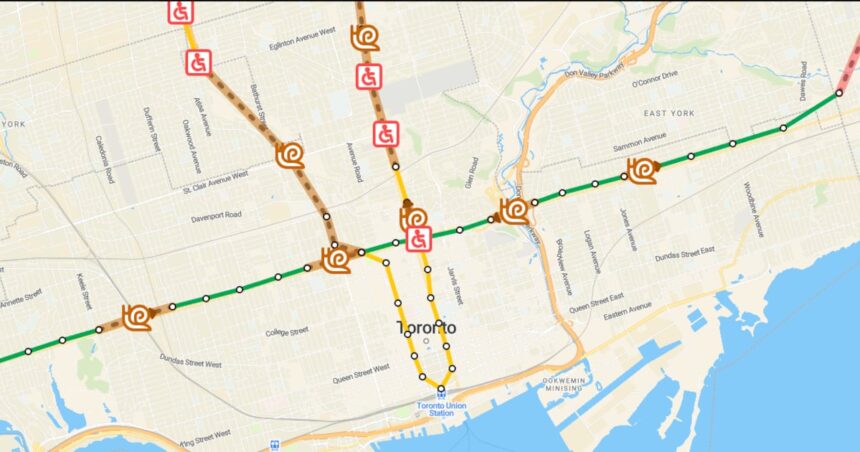In a city where transit delays and service disruptions have become all too familiar, a University of Toronto student has taken matters into his own hands, developing an innovative solution that could change how Torontonians navigate their daily commutes.
Twenty-two-year-old computer science student Khaleel Ganchi has created “TTCstat,” a streamlined web application that consolidates real-time TTC information into a single, user-friendly dashboard. The project emerged from Ganchi’s personal frustrations with Toronto’s fragmented transit information system.
“I was tired of jumping between multiple apps and websites just to figure out if my subway was running,” Ganchi told CO24 News during an interview at his campus workspace. “Sometimes you need service alerts, sometimes you need next vehicle arrivals, and they’re all in different places. I thought there had to be a better way.”
The elegant solution pulls data from various TTC feeds, including service disruptions, next vehicle arrivals, and station accessibility status, presenting everything in a clean interface that loads in seconds. What sets TTCstat apart is its simplicity—no downloads required, no account creation, just essential information available instantly.
Transit experts have taken notice of Ganchi’s creation. Urban planning professor Melissa Chen from the University of Toronto believes such grassroots innovation reflects a growing trend of citizen-led solutions to municipal challenges.
“When official systems don’t fully meet public needs, we increasingly see tech-savvy residents stepping in,” Chen explained. “These civic tech projects often understand user pain points better than institutional solutions because they’re built by the very people experiencing the problems.”
The TTCstat platform has quickly gained traction since its launch three weeks ago, with over 5,000 users already relying on it for their daily commutes. Ganchi maintains the service entirely from his student apartment, covering the modest server costs himself.
TTC spokesperson James Robertson acknowledged the value of such community initiatives in a statement to CO24: “We appreciate the creativity and technical skills that Mr. Ganchi has brought to enhancing the rider experience. The TTC is always open to exploring ways to improve our information services.”
For Ganchi, this project represents more than just a technical achievement. “Public transit is essential infrastructure that connects our communities. Making it more accessible and user-friendly benefits everyone—especially those who rely on it most,” he said.
The young developer plans to expand the platform’s features based on user feedback, potentially adding trip planning functionality and accessibility information. He’s also exploring options to make the project open-source, allowing other developers to contribute improvements.
As Toronto continues to grapple with transit challenges and an aging system under financial strain, innovations like TTCstat raise important questions about the role of citizen-led solutions in addressing public service gaps. In a city where municipal budgets are tight and technological upgrades often move slowly, could community-driven digital tools become an essential complement to official services?
For thousands of Toronto commuters already using Ganchi’s creation, the answer seems clear—sometimes the most effective solutions come not from boardrooms, but from the very people navigating the system every day.










